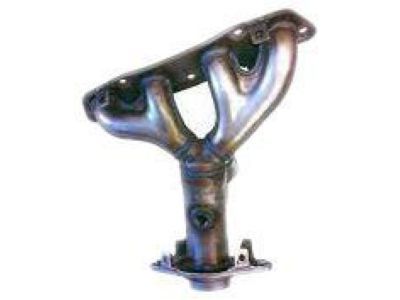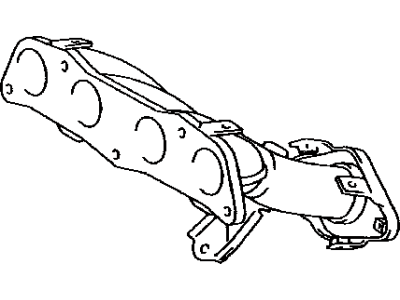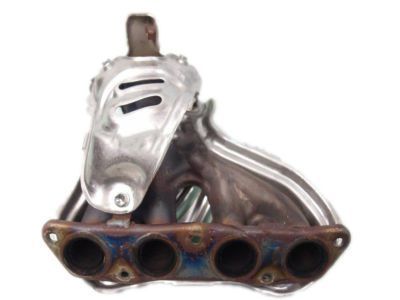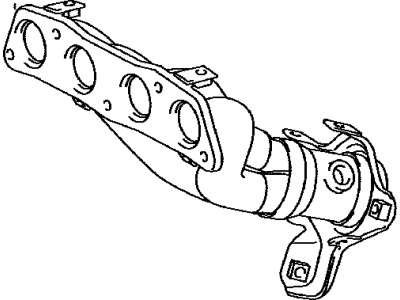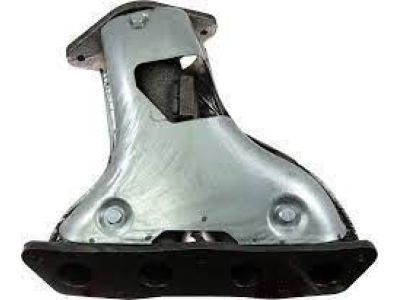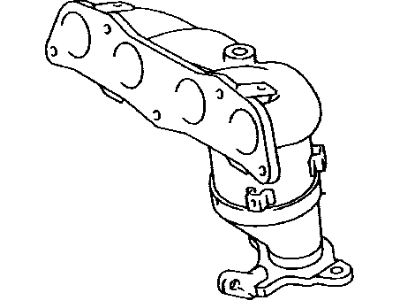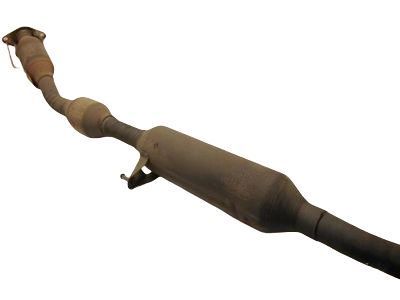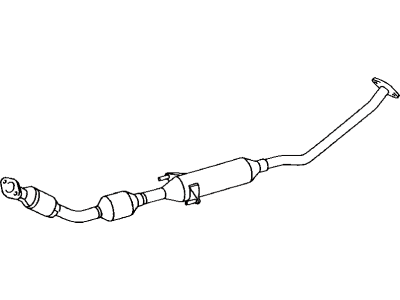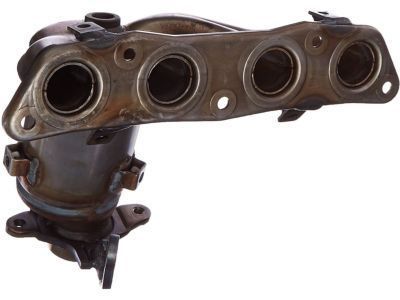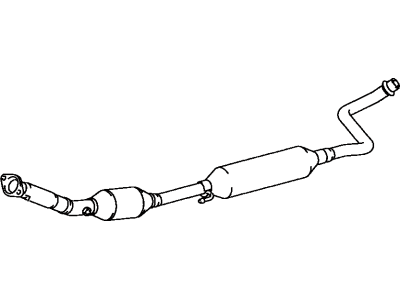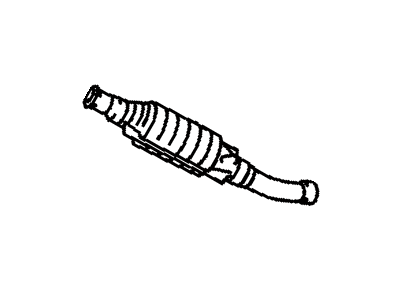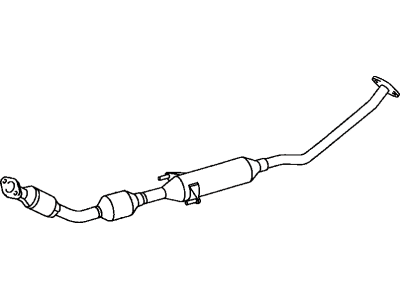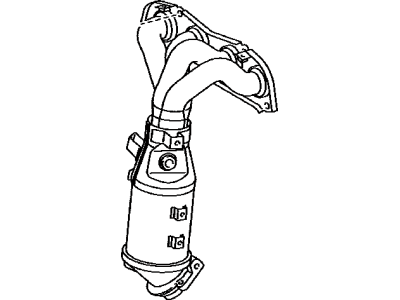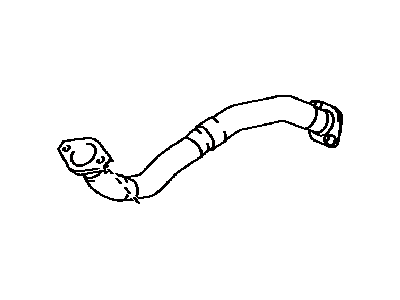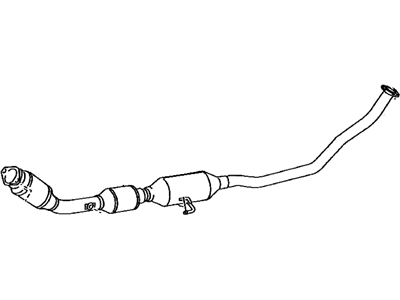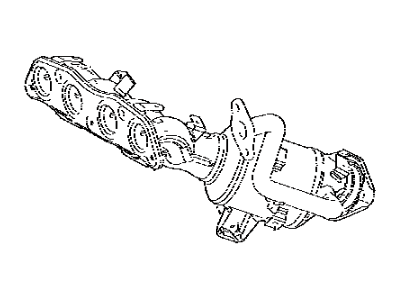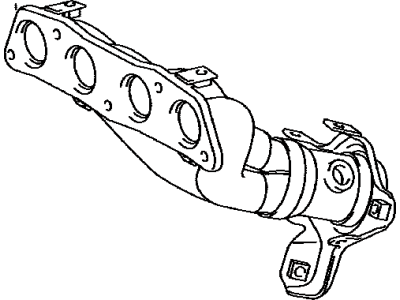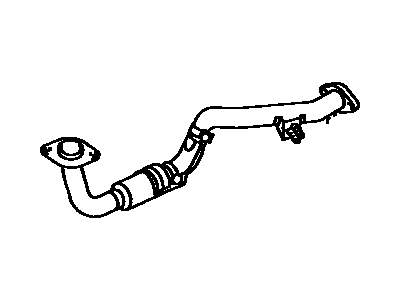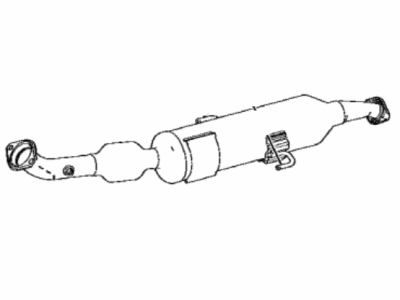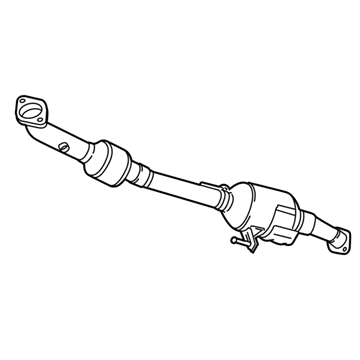

My Garage
My Account
Cart
Genuine Toyota Corolla Catalytic Converter
Cat. Converter- Select Vehicle by Model
- Select Vehicle by VIN
Select Vehicle by Model
orMake
Model
Year
Select Vehicle by VIN
For the most accurate results, select vehicle by your VIN (Vehicle Identification Number).
176 Catalytic Converters found
Toyota Corolla Exhaust Manifold
Part Number: 17104-22100$213.66 MSRP: $306.38You Save: $92.72 (31%)Ships in 1-3 Business DaysToyota Corolla Exhaust Manifold
Part Number: 17141-0T080$191.85 MSRP: $275.10You Save: $83.25 (31%)Ships in 1-3 Business DaysToyota Corolla Exhaust Manifold
Part Number: 17104-0D040$213.66 MSRP: $306.38You Save: $92.72 (31%)Ships in 1-3 Business DaysToyota Corolla Front Exhaust Pipe Assembly
Part Number: 17410-0D340$1361.64 MSRP: $1835.80You Save: $474.16 (26%)Ships in 1-3 Business DaysToyota Corolla Exhaust Manifold
Part Number: 17104-22110$567.70 MSRP: $835.66You Save: $267.96 (33%)Ships in 1-3 Business DaysToyota Corolla Front Exhaust Pipe Assembly
Part Number: 17410-0T561$1245.93 MSRP: $1679.80You Save: $433.87 (26%)Ships in 1-3 Business DaysToyota Corolla Catalytic Converter Assembly With Pipe
Part Number: 17460-0D070$1527.75 MSRP: $2059.76You Save: $532.01 (26%)Ships in 1-3 Business DaysToyota Corolla Front Exhaust Pipe Assembly
Part Number: 17410-22500$1548.09 MSRP: $2087.18You Save: $539.09 (26%)Ships in 1-3 Business DaysToyota Corolla Exhaust Manifold Converter Sub-Assembly
Part Number: 25051-28350$582.84 MSRP: $729.64You Save: $146.80 (21%)Ships in 1-2 Business DaysToyota Corolla Front Exhaust Pipe Assembly
Part Number: 17410-0T240$1315.08 MSRP: $1773.04You Save: $457.96 (26%)Toyota Corolla Front Exhaust Pipe Assembly
Part Number: 17410-37260$1682.33 MSRP: $2268.17You Save: $585.84 (26%)Ships in 1-3 Business DaysToyota Corolla Exhaust Manifold
Part Number: 17141-0T200$191.85 MSRP: $275.10You Save: $83.25 (31%)Ships in 1-3 Business DaysToyota Corolla Front Exhaust Pipe Assembly
Part Number: 17410-0T560$1370.90 MSRP: $1848.30You Save: $477.40 (26%)Ships in 1-3 Business DaysToyota Corolla Front Exhaust Pipe Assembly
Part Number: 17410-0D190$168.59 MSRP: $219.52You Save: $50.93 (24%)Ships in 1-3 Business DaysToyota Corolla Front Exhaust Pipe Assembly
Part Number: 17410-37420$1406.27 MSRP: $1895.98You Save: $489.71 (26%)Ships in 1-3 Business DaysToyota Corolla Exhaust Manifold
Part Number: 17141-37130$170.46 MSRP: $242.33You Save: $71.87 (30%)Ships in 1-3 Business DaysToyota Corolla Front Exhaust Pipe Assembly
Part Number: 17410-01031$234.01 MSRP: $307.34You Save: $73.33 (24%)Ships in 1-3 Business DaysToyota Corolla Pipe Assembly, Exhaust
Part Number: 17410-F2170$871.11 MSRP: $1174.45You Save: $303.34 (26%)Ships in 1-3 Business DaysToyota Corolla Exhaust Pipe Assembly
Part Number: 17410-24250$772.23 MSRP: $1041.15You Save: $268.92 (26%)Ships in 1-3 Business Days
| Page 1 of 9 |Next >
1-20 of 176 Results
Toyota Corolla Catalytic Converter
If you are in demand for superior quality and affordable OEM Toyota Corolla Catalytic Converter, then shop with us! We own a wide range of the reduced-priced genuine Toyota Corolla Catalytic Converter. You can purchase in confidence as all parts come with a manufacturer's warranty. Any issues with our products? No need to worry as we have a hassle-free return policy to guide you every step of the way.
Toyota Corolla Catalytic Converter Parts Questions & Experts Answers
- Q: What should you know about catalytic converters and their maintenance on Toyota Corolla?A:Because of a Federally required warranty which lingers beyond the standard 48 months or 50,000 miles, one should check with the dealer service department before replacing parts such as the catalytic converter, which falls under emissions-related components. The catalytic converter is an emission control unit in the exhaust system involved in cutting emissions. There are two types: there is the normal oxidation catalyst that reduces the level of hydrocarbon and carbon monoxide as well as the three way oxidation catalyst that also reduces oxides of nitrogen. If one is experiencing this problem, it is advisable to take the car for diagnosing to a dealer or an authorized emissions inspection center. Any time the underbody of the vehicle is being worked on, check the converter for leaks, rust, any sign of denting or any general damage especially at the weld and flange bolts areas. Nevertheless, plugged converters are possible though they are rare; if introduction vacuum is measured before the gadget and after the application of the throttle, a vacuum gauge could be used to diagnose this. For replacement, it is necessary to spray nuts located on the studs of exhaust flange before its removal, to separate the converter from the exhaust manifold in a car, and to cut the rear part of the converter from the exhaust pipe since a new one will have to be welded further. Installation is the reverse procedure of removal and it is done this way because new gaskets are placed where needed.
Related Toyota Corolla Parts
Browse by Year
2024 Catalytic Converter 2023 Catalytic Converter 2022 Catalytic Converter 2021 Catalytic Converter 2020 Catalytic Converter 2019 Catalytic Converter 2018 Catalytic Converter 2017 Catalytic Converter 2016 Catalytic Converter 2015 Catalytic Converter 2014 Catalytic Converter 2013 Catalytic Converter 2012 Catalytic Converter 2011 Catalytic Converter 2010 Catalytic Converter 2009 Catalytic Converter 2008 Catalytic Converter 2007 Catalytic Converter 2006 Catalytic Converter 2005 Catalytic Converter 2004 Catalytic Converter 2003 Catalytic Converter 2002 Catalytic Converter 2001 Catalytic Converter 2000 Catalytic Converter 1999 Catalytic Converter 1998 Catalytic Converter 1997 Catalytic Converter 1996 Catalytic Converter 1995 Catalytic Converter 1994 Catalytic Converter 1993 Catalytic Converter 1992 Catalytic Converter 1991 Catalytic Converter 1990 Catalytic Converter 1989 Catalytic Converter 1988 Catalytic Converter 1987 Catalytic Converter 1986 Catalytic Converter 1985 Catalytic Converter 1984 Catalytic Converter 1983 Catalytic Converter 1982 Catalytic Converter 1981 Catalytic Converter 1980 Catalytic Converter 1979 Catalytic Converter 1978 Catalytic Converter 1977 Catalytic Converter 1976 Catalytic Converter 1975 Catalytic Converter
